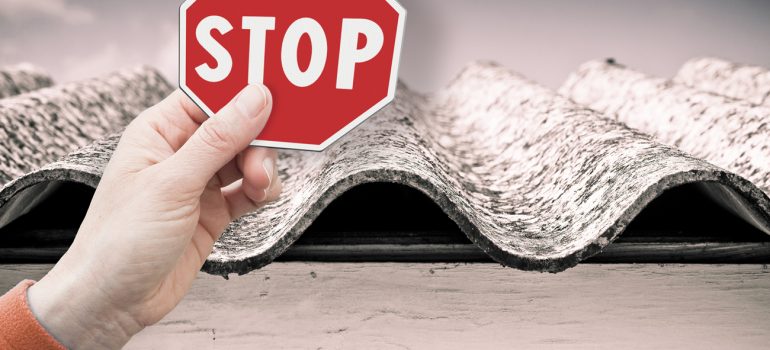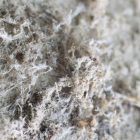Important Information on Asbestos and the Dangers of Exposure You Should Be Aware of
Photo by wirestock On Envato Elements
The term “asbestos” encompasses a collection of natural mineral fibers found in rocks and soil, which were commonly utilized in various products due to their durability and exceptional ability to withstand fire and chemicals.
According to statistics and facts on asbestos, it is responsible for the death of around 39,000 Americans annually. This is because consistent exposure to asbestos results in multiple irreversible diseases.
If your home was constructed during the mid-20th century or later, it may be necessary to consider asbestos abatement in light of concerning facts about asbestos.
Asbestos-Containing Products
Asbestos is highly sought after for its fire and chemical resistance, leading to its widespread use in over 5,000 products. Throughout history, the following items have contained asbestos:
- Linings for brakes
- Pads for brakes
- Textured ceiling
- Tiles for ceilings
- Roofing materials
- Panels for walls
- Pipes and tubes
- Air ducts
- Circuit breakers
- Electrical panels
- Protective blankets for fires
- Curtains for fire safety
- Sealants and seals
- Insulation for furnaces
- Tiles for vinyl flooring
- Sheets for vinyl flooring
- Filters for beverages
- Sealants and putties
- Materials for soundproofing or decoration
- Slow cookers
- Paints and coatings
- Hair styling tools
- Filters for cigarettes
- Fertilizing products
- Rests for irons
- Mats for stoves
During a certain time, asbestos was also discovered in infant powder.
Health Risks Associated with Asbestos Exposure
Despite its widespread use in various industries, asbestos eventually gained notoriety due to its potential health risks.
Although it is known for its resistance to fire and chemicals, asbestos can easily deteriorate when handled by humans. Activities such as drilling, cutting, or striking floor tiles, shingles, or any other product containing asbestos can cause the release of asbestos fibers into the air, which can then be inhaled.
Another concern is the potential for ingesting asbestos fibers through the consumption of water that passes through pipes made of asbestos cement.
Although the health hazard is minimal for individuals who have been exposed to asbestos for a short time, prolonged asbestos exposure can lead to various illnesses including:
Each year, approximately 3,000 individuals receive a diagnosis of mesothelioma, a form of cancer often associated with asbestos exposure. This disease affects the lining of the lungs and abdominal cavity, causing symptoms such as chest or abdominal discomfort, difficulty breathing, a dry and wheezing cough, fever or night sweats, muscle weakness, and fatigue.
Asbestosis is a lung disease that is characterized by chronic symptoms such as shortness of breath and scarring of the lung tissue. It is caused by prolonged inhalation of asbestos fibers, resulting in difficulty swallowing, crackling breathing, high blood pressure, clubbing of fingertips and toes, persistent dry coughing, and chest pain or tightness. Additionally, individuals with asbestosis have a higher likelihood of developing mesothelioma.
Mesothelioma, a type of lung cancer, impacts the lining of the lungs, while lung cancer forms within the organ. Although smoking and other environmental triggers are the primary culprits of lung cancer, asbestos exposure is also a contributing factor. Interestingly, individuals who smoke and have a history of asbestos exposure are at the greatest risk of developing lung cancer.
According to recent research, it has been confirmed that ovarian cancer in individuals who use cosmetic talc products is associated with asbestos exposure.
Who Is at the Greatest Dangers of Exposure?
Given the widespread use of asbestos in numerous constructions and items, we are all susceptible to being exposed to asbestos.
During the peak of asbestos use, certain professions carried a significantly greater risk of exposure compared to others. These occupations included:
- Individuals who work in the mining industry for raw asbestos
- Professionals who specialize in renovating and demolishing buildings
- Workers in the construction field
- Auto repair technicians
- Employees in the manufacturing sector
- Installers of drywall
- Firefighters who respond to emergencies
- Skilled workers in plumbing and pipefitting
- Employees in the railroad industry
- Skilled workers who lay bricks
- Professionals who build and repair boilers
- Members of the military
- Removing Asbestos
A significant number of homes and commercial buildings in the United States are constructed with materials that contain different amounts of asbestos. During renovations or demolitions of these structures, the presence of asbestos in the materials is likely to be disrupted. This can lead to the release of asbestos fibers into the air, posing a risk of asbestos exposure to anyone in the vicinity.
If there is a suspicion of asbestos contamination in your residence or structure, it is highly recommended to hire asbestos specialists before commencing any construction or demolition activities. These professionals have the necessary expertise to examine and verify the presence of asbestos in your building.
Additionally, they possess the necessary skills, tools, and experience to safely and properly remove asbestos from any type of structure, all while adhering to strict regulations and procedures.






